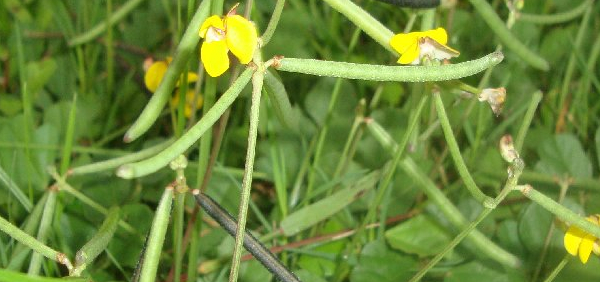vatsanabha :

Vathsanabha is known to the ayurvedic pharmacopeia since very early times. The word VISHA is delineated in ADHARVANA VEDA and BRAHMANA GRANDHA. Among the brihaththrayis charakacharya mentioned it under STHAVARA VISHA. He also denoted it as visha which is one of the ingredients of iendryrasayana. Vishadharana is one of the prophylactic measures for vishamajwara according to charakacharya. Vathsanabhi is described under 13 verities of kandhavisha by susruthacharya. It is very important to note that he quoted 4 verities of vathsanabhi for first times probably there are 4 varieties which are elaborated by Yogarathnakaralater.Susruthacharya elaborated the poisonous effects of vathsanabhi also. He included it among the KUSHTAHARA YOGAS. Vagbhatacharya preferred the name Visha to denote Vathsanabhi and used it in the treatment of KUSHTA,THIIRA,GANDAMALA,NADIVRNA,and APACHY etc.
Sarangadhara and Bhavamisra delineated Vathsanabhi in the texts while almost all nighadus mentioned it. Though Dhanvantharinighanduposses descriptions of Vathsanabhi synonyms and properties, most of the nighandu made little mentionings,Rajanighandu included it in the PANCHA MAHA VISHA. The utility of vathsanabhi definitely increased after the development of rasasastra.
After sodhana it is cardiac stimulant!!! but without sodhanakarma it is cardiac depresent!!
Taxonomical Classification
VERNACULAR NAMES
English: Indian aconite, Monk’s hood, AconitumHindi: Bachnag, Meetavish, Bachanag, Bis, Bish, Mhoor
Telugu: Ativisa, Nabhi
Bengali: Bish, Butsnabish, Katbish
Marathi: Bachag, Vachnag
Gujarathi: Shingadivachanag
Tamil: Vashanavi
Malayalam: Vatsanabhi, Vatsanabham
Kannada: Vatsanabhi
Arabic: Bish
Assamese: Bish
Persian: Bishnag, Zhe
Varities:
Susruthacharya quoted about four verities of vathsanabhi. Rasavagbhada have elaborated the four verities as brahma, kshthriya, vaisya, sudra
Brahmana- panduvarnavaisya-pithavarna
Kshatriya-rakthavarnasudra-krishnavarna
But rasatharanginy described only three variety of vathsanabhi on the basis of colour Krishna, kapisa, and panduvarna. They are considered as superior to each other in the same order.
Synonyms
Synonyms in Ayurveda: vatsanabha, visha, amrit, ugra, mahaushadha, garal, maran, nag, stokaka, visha, Vatsanabha, Halahala, PranaharaVATHSANABHA: The root resembles the umbilicus of vathsa
VISHA
HALAHALA
AMRUTHA
GARALA
GARA
GARADA
BHOGARA
KALAKODA
KSHWEDA: Which act as madaka
SOWRASHTRIKA: Native origin
RAKTHASRUNGIKA: Poison
VISHAMUKTHA
MAHUSHADAM
MARANAM
NAGAM
KSHWEDA
TANKANA
Rasa: Madhura
Guna: Laghu Ruksha Teeskhsna Vikasi Vyavay
Veerya: Ushna
Vipaka: Katu Maduram
Karma: Amavaathagna Arthavajanana Depana Hridya Jangma Jwarahara-useful in fever, Kushtagna-useful in skin diseases, Madakary Mootrala Pachana Sandhivathahara Sodhahara Sukrasthambana Swedala-stops excess sweating, Vathakaphahara Vedanasthapaka Vishahara-Anti toxic, Vyavay
Cultivation:
Cultivated in Himachal Pradesh, Panjab, Sikkim states in India; also grows wild in Himalayan peninsula.Phytochemistry:
Root- roots contains pseudo-aconite, a toxic substance (similar to that of aconite) which is obtained approximately 4 gm in about half kg root material.
Aconite: 0.97-1.23%, Picro-aconine, Benzoin-aconine and Homonipoline are also present.
Parts used for medicinal purpose
Root tuber, ,Dosage:
In Rasartnasamuchaya
1st day – 1 sarshapa
2-4th day – 2 sarshapa
5-7th day – 3 sarshapa
9th day onwards – 1 sarshapa quantity increased for every 4 days till it reaches a maximum dose of 1 ratty(120mg)
In Ayurveda prakasa
1st day – 1 sarshapa
2-7th day – 1 sarshapa increased per day
8-14 days – 1 sarshapa reduce per day
3rd week – 1 sarshapa increased per day
4th week – 1 sarshapa reduce per day
RasaratnasamuchayaandAyurvedaprakasamentiond to increse gradually and tappering of vatsanabha like Vardhamana yoga.
-The maximum dose of Vatsanabha is 8 Yava only.
-P.V Sharmaji prescribes 1/8 ratty ie, 15 mg of root powder and VaidyaBapalal advocates 60-125 mg of root powder.
Adultrants:
Regarding the colour of market samples of aconite it is observed that in and around Amrithasar the roots of aconite are artificially coloured by using several techniquesMorphology:
A biennial herb grows up to 90 cm in height. Leaves scattered with slender petiole, palmately compound, with fleshy leaf blades. Flowers blue, in long recemes. Fruits oblong, seeds obovoid to pyramidal shaped, Root tubers are dark brown and is extremely poisonous.Abconical, abruptly tapering roots, more often paired as mother and daughter tubers, 2-5 cm in length and up to 2.5 cm in diameter at the thickest part. Surface dark brown in color, densly covered with remnants of root lets or root scars arranged in an annular fashion. Fracture short exposing a medially surface of yellowish brown color odor nil. Taste slightly sweet followed by tingling sensation.
General Use:
The tuberous root is medicinally used in various preparations. Both the ancient and modern descriptions indicate that the collection of root is preferred during winter.Therapeutic Uses:
Plant pacifies vitiated vata, pitta, fever, cough, asthma, bronchitis, hypotension, colic, flatulence, dyspepsia, amenorrhea, skin diseases, low back pain, arthritis, hepatitis and cardiac debility. The root powder in large dose is narcotic to lethal.Shirashoola: yeshtichurna 1 thola&vatsanabha powder 2.5g is used as pradhamananasya in a dose of 1 sarshapa mg.
Shoola:pippali,pippalimoola&vatsanabhachoorna are mixed in equal proportion
INDICATION
NADIDOURBALYA,HRUTDOURBALYA
-PAKSHAGADA, SANDHIVATHA,AMAVATHA
-SIRASOOLA
-KASA, SWASA
-IKSHUMEHA,BAHUMUTRA,SAYYAMUTRA
-MUTRASARKARA,PREMEHA
-JWARA,SANNIPATAJWARA,JEERNAJWARA
-SODAVEDANAYUKTHA VIKARA,JWARA
-AGNIMANDYA,UDARA VIKARA,SULA
-YAKRUT PLEEHAVIKARA
-JANGAMAVISHA
-KUSHTA
-MADHUMEHA
-VATHA ROGA
Pharmacological:
VISISHTA YOGA’S
Anathabhirava rasa-Amrutharasayana-Hinguleswara rasa-Indryrasayana-Jwaramurary-Jaya vaty-Kaphakethu rasa-Mritunjaya rasa-Panjamrutha rasa-Panjavaktra rasa-Rambhanarasa-Saubhagyavatika-Siratandava rasa-Tribhuvanakeerti rasa-Visharasayana-Vishataila
Clinical trials:
Cimi Bhaskaran:
On analysis in r&b dept.tvm,it was found that on consecutive sodhana in milk the aconitine levels dropped to negligible amounts.
Had better effects with sodhana in gomutra.
Research:
Vaidya Bapalal reported that Dr. Kartika Chandra Basu created a case of leprosy by administering low dose (10grains/clay) of vatsanabhi and cured it
It is documented that unless the skin is sound a dangerous quantity may be absorbed systemically even when applied externally as liniment.
- » Classification and names of vatsanabha
- » Synonyms and definitions of vatsanabha
- » Drug Properties of vatsanabha
- » Chemical Constituents of vatsanabha
- » Standardization of vatsanabha
- » Parts used and Dosage of vatsanabha
- » Morphology and Histology of vatsanabha
- » Distribution and Conservation of vatsanabha
- » Cultivation of vatsanabha
- » vatsanabha in the market
- » Medicinal Uses of vatsanabha
- » Researches and clinical trails of vatsanabha
- » vatsanabha in other sytems of medicine
- » Ayurvedic formulations with vatsanabha
- » Images of vatsanabha













